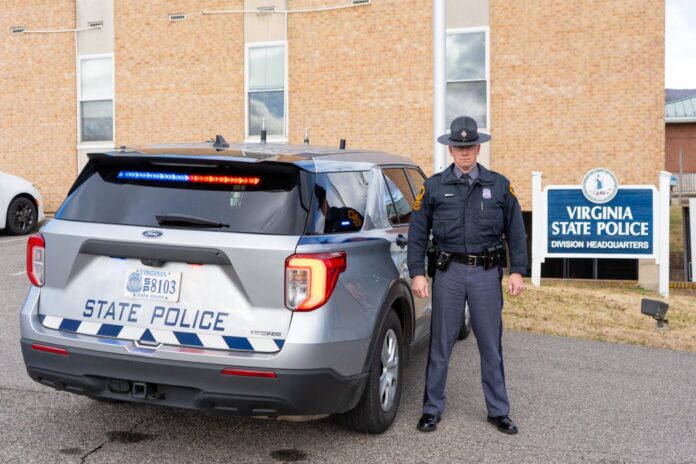The difference between red and blue could save lives.
Ronald Gibbons and his team of researchers from the Virginia Tech Transportation Institute (VTTI) have found that motorists passing a stopped police vehicle pay more attention when the vehicle has more emergency lights and uses red lights in its light bar. Now, as the next fleet of Virginia State Police vehicles is being rolled out, the vehicles are being equipped with a new lighting pattern that includes both red and blue lights, based on testing and evaluation by Virginia State Police Driver Training Center staff, nationwide best practices for police vehicle emergency lighting, vendor input, and recommendations from VTTI’s published research.
“VTTI’s lighting study findings and recommendations played a significant role in the marking and lighting configuration of our newly designed patrol SUV’s,” said Col. Gary T. Settle, superintendent of the Virginia State Police. “We are grateful for the significant research and collaborative efforts that VTTI extended to the Virginia State Police during the multiple phases of the study.”
The Move Over Law established in 2002 requires drivers to move over if passing stopped vehicles with flashing amber, red, or blue lights. Despite the law, 40 officers were killed in 2022 across the nation in traffic-related incidents, a 29 percent increase from 2021, according to the National Law Enforcement Officers Memorial Fund.
Funded by the National Institute of Justice, the team of VTTI researchers first partnered with Virginia State Police to analyze police vehicle lighting and the responses of drivers in 2014. The most recent study was the first naturalistic traffic assessment of lane-change and speed behavior in proximity to an actively lit law enforcement vehicle conducted on this scale.
“This was an exciting project that allowed us to work closely with the Virginia State Police to look at several lighting and marking conditions both in an experimental approach on the Virginia Smart Road and also naturalistically in the field,” said Gibbons, leader of the Infrastructure-Based Safety Systems group at VTTI.
The research investigated a variety of conventional and popular alternatives to lighting police vehicles by placing a police vehicle behind a civilian vehicle on the shoulder of a road. The team analyzed a marked police vehicle with four different lighting patterns and an unmarked vehicle with two different lighting patterns in five locations across Virginia, spanning from urban to rural environments and at different times of day.
The data collected supports that more lighting and the use of red lights in a light bar has a positive impact on traffic behavior. This includes merging to a farther lane earlier and slowing down while passing.






